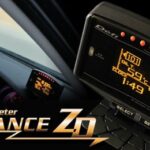Troubleshooting engine problems on your Joyner Trooper often requires access to the OBD2 port. This port allows you to connect a diagnostic scanner to retrieve engine codes, monitor performance data, and identify the root cause of issues. This article will guide you to the location of the OBD2 port on a Joyner Trooper.
The OBD2 (On-Board Diagnostics II) port is a standardized 16-pin connector found on most vehicles manufactured after 1996. It’s typically located within the driver’s reach, somewhere under the dashboard or steering column. However, its exact location can vary slightly depending on the specific model and year of your Joyner Trooper.
While Joyner Troopers generally adhere to the OBD2 standard, some older models might use a different connector or protocol. If you’re unsure about your Trooper’s compatibility, consulting the owner’s manual is recommended. The manual should provide specific information on the diagnostic port location and type.
For most Joyner Trooper models, the OBD2 port is located beneath the steering column, near the fuse box. You might need to bend down or use a flashlight to visually locate it. The port is usually a black or white rectangular connector with a trapezoidal shape. It’s often recessed or covered by a small panel to protect it from dust and debris.
Once you’ve found the OBD2 port, you can connect a compatible diagnostic scanner. A standard OBD2 scanner will work with most Joyner Troopers. These scanners can range from basic code readers to more advanced tools that offer live data streaming and other functionalities.
Connecting the scanner is straightforward; simply plug it into the OBD2 port. Ensure the ignition is turned to the “on” position (but don’t start the engine) before attempting to read codes or access data. The scanner will then communicate with the Trooper’s ECU (Engine Control Unit) to retrieve information.
Using an OBD2 scanner, you can retrieve diagnostic trouble codes (DTCs) that indicate specific malfunctions. These codes can then be used to pinpoint the source of the problem. Additionally, many scanners display live sensor data, allowing you to monitor various engine parameters in real time. This data can be invaluable for diagnosing intermittent issues or fine-tuning performance.
If you’re experiencing performance problems with your Joyner Trooper, locating and utilizing the OBD2 port is a crucial first step in the diagnostic process. Remember to consult your owner’s manual for specific information related to your model year. A reliable OBD2 scanner paired with the knowledge gained from the retrieved codes can significantly aid in troubleshooting and resolving engine issues.
